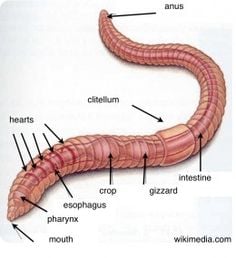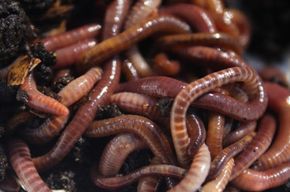Taking Full Advantage Of the Conveniences of Red Wiggler Worms: A Comprehensive Manual for Home Gardeners and Urban Farmers
In the world of sustainable gardening practices, red wiggler worms stand as unhonored heroes, silently changing organic waste right into nutrient-rich spreadings that can work marvels for dirt health. As home garden enthusiasts and city farmers progressively seek eco-friendly and affordable ways to boost their gardens, the potential advantages of harnessing the power of red wigglers can not be overemphasized. From reducing kitchen area waste to cultivating much healthier plants, the use of these modest animals provides a myriad of benefits. By exploring the intricacies of just how to successfully take care of and maximize the advantages of red wiggler worms, individuals can open a wide range of chances for boosting the sustainability and efficiency of their gardening endeavors.
Comprehending Red Wiggler Worms
Red Wiggler worms, renowned for their effective composting capabilities, are a species of earthworms commonly used in vermiculture practices. These worms, scientifically called Eisenia fetida, grow in decomposing organic product, making them perfect candidates for composting (Red Wiggler Worms). Red Wigglers are voracious eaters, efficient in eating their very own weight in organic waste daily. Their gastrointestinal procedure breaks down raw material right into nutrient-rich castings, which are an important resource for enhancing soil and promoting plant development.
One secret characteristic of Red Wiggler worms is their reproductive price. These hermaphroditic creatures have both women and male reproductive organs, permitting them to replicate swiftly under positive problems. A fully grown Red Wiggler can generate several offspring in a short period, ensuring a stable populace within a composting system.

Setting Up a Worm Container
When developing a worm bin for vermiculture purposes, appropriate preparation and attention to detail are important for creating a helpful setting for Red Wiggler worms. Begin by choosing an ideal container for your worm bin. This can be a plastic or wood container with a cover to keep wetness levels and secure the worms from light. Make certain that the bin has water drainage openings near the bottom to avoid waterlogging.

Location the worm bin in a great, dark location away from straight sunshine and extreme temperatures. Routinely monitor the wetness levels, including water if the bedding feels dry or flaky. Feed the worms a well balanced diet plan of vegetables and fruit scraps, preventing citrus fruits, onions, and spicy foods. By adhering to these steps, you can set up a growing worm bin that will successfully process organic waste into nutrient-rich vermicompost for your yard.
Feeding and Keeping Worms
Making certain a well balanced and nourishing diet is crucial for the health and performance of Red Wiggler worms in a vermiculture system. Red Wigglers are voracious eaters, with the ability of eating their very own body weight in raw material daily. To maintain a growing worm population, it is vital to give them with a variety of food scraps such as fruit and vegetable peels, coffee grounds, tea bags, and smashed eggshells. It is important to stay clear of feeding them citrus fruits, onions, garlic, milk items, meat, and oily foods as these can be dangerous to the worms or cause undesirable odors in the container.
Appropriate wetness you can try here levels are additionally vital for the well-being of Red Wiggler worms. The bedding should seem like a moist sponge, supplying adequate dampness for the worms to breathe through their skin. Regularly check the wetness levels and adjust by including water or dry bedding material as required. Furthermore, keeping proper temperature problems in between 55-77 ° F(13-25 ° C )will certainly guarantee optimal worm task and reproduction. By diligently monitoring their diet regimen, dampness, and environmental conditions, home garden enthusiasts and urban farmers can maintain a efficient and healthy and balanced Red Wiggler worm populace for composting functions.
Harvesting Worm Castings
To efficiently remove nutrient-rich worm spreadings from the vermicompost, a methodical harvesting process is important for making the most of the composting benefits. Red Wiggler Worms. The very first step in gathering worm spreadings is to urge the worms to move to one side of the bin. This can be achieved by putting fresh food scraps on one side and leaving the various other side undisturbed for a couple of days. Once most of worms have actually dodged with fresh food, the castings can be gathered from the opposite side.
After the spreadings have been gathered, it is necessary to divide any type of remaining worms from the castings to avoid hurting them during storage space or application. One Look At This reliable approach is to create conical piles of castings under intense light. Worms will instinctively move away from the light, permitting easy separation and removal.
Lastly, the gathered worm castings ought to be stored in a cool, dark, and dry area to keep their quality and efficiency as a nutrient-rich soil amendment. By adhering to these actions, home gardeners and city farmers can take full advantage of the benefits of red wiggler worms in their vermicomposting systems.
Making Use Of Worm Castings in Horticulture
The consolidation of nutrient-rich worm castings right into garden dirt can considerably improve plant development and general soil wellness. Worm spreadings, likewise called vermicast, are an all-natural fertilizer created by red wiggler worms as they break down raw material. These castings are rich in important nutrients like nitrogen, phosphorus, potassium, and helpful germs that promote plant growth and enhance soil structure.
When making use of worm spreadings in horticulture, it is necessary to blend them completely into the dirt or utilize them as a top clothing around plants. The slow-release nature of worm castings makes certain a constant supply of nutrients to plants gradually, decreasing the threat of nutrient leaching and promoting long-term soil fertility. Additionally, worm spreadings help enhance dirt oygenation, water retention, and microbial activity, developing a healthy environment for plant origins to flourish.

Verdict
To conclude, the application of red wiggler worms in home horticulture and city farming can dramatically benefit soil health and wellness and plant development. By comprehending just how to set up and maintain a worm container, feed the worms appropriately, and gather their nutrient-rich castings, garden enthusiasts can optimize the benefits of these earthworms. Integrating worm castings right into horticulture techniques can boost soil fertility and general plant efficiency. In general, red wiggler worms offer a effective and lasting remedy for enhancing yard and ranch returns.
In the world of lasting gardening practices, red wiggler worms stand as unhonored heroes, silently changing natural waste right into nutrient-rich spreadings that can function marvels for soil wellness.When developing a worm bin for vermiculture functions, correct preparation and focus to information are crucial for developing a conducive environment for Red Wiggler worms. The very first step in harvesting worm spreadings is to encourage the worms to migrate to one side of the bin. Worm castings, also recognized as vermicast, are a natural plant food created by red wiggler worms as they break down natural issue. By comprehending how to establish up and keep a worm container, feed the worms effectively, and harvest their nutrient-rich spreadings, garden enthusiasts can make the most of the advantages of these earthworms.